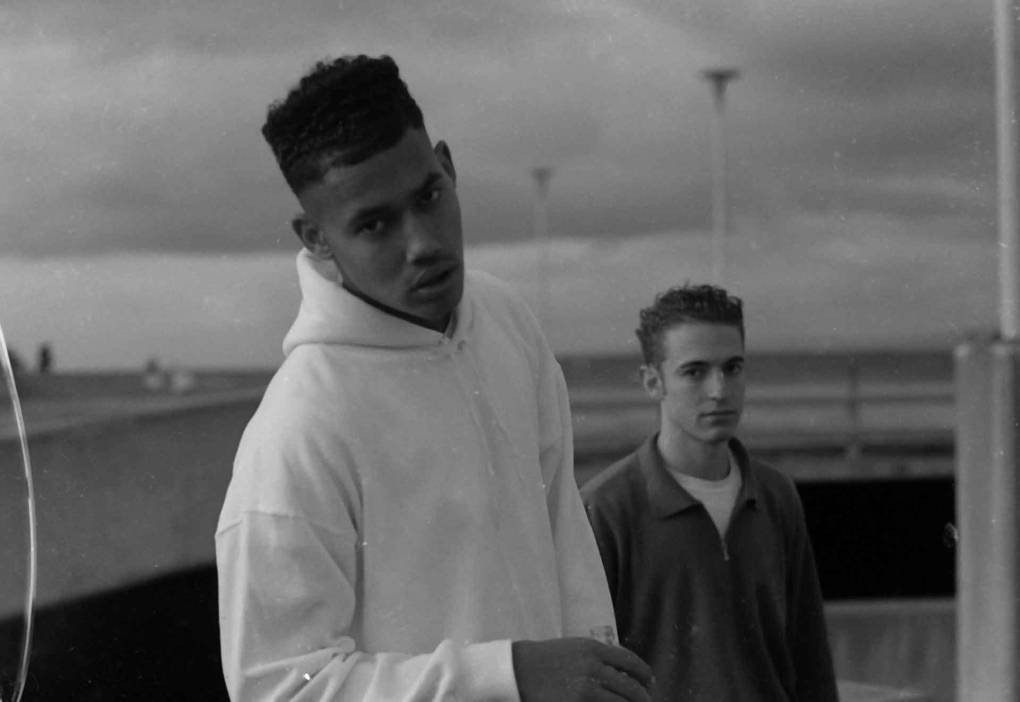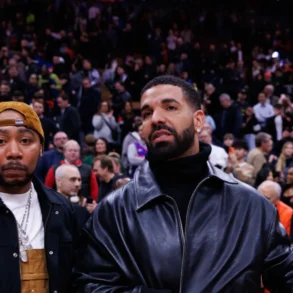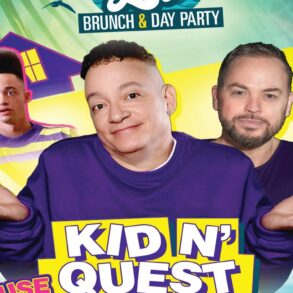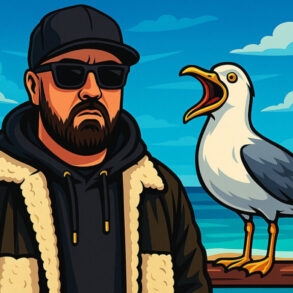Looking back, it was really bold to the point of insulting for me to do that, but I didn’t know any better. I was 15. And there weren’t really felt slipmats that you could buy, so we would use the rubber platter that came with the turntable and try to scratch with that under the record. It would ruin my records. And I couldn’t really afford Technics 1200s until the mid-’90s, so even the scratches I did on the songs with Charizma in the early ’90s were done with a Fisher turntable that didn’t even have pitch control and a Radio Shack Realistic mixer. I taped my library card to the crossfader to be able to scratch faster, but even then, you could hear the static as it was happening. By around 1986 when DJ Cheese and Jazzy Jeff and Cash Money came out, transforming and chirping and doing all these difficult scratches, I tried to use the on/off button on my mixer and I’d have these terrible calluses on my thumb and index finger.
It would literally hurt to scratch, but we were committed. We’d use WD-40 to try to make the mixer less sticky so we could scratch faster. The WD-40 helped get rid of the static, too. But back to D-Styles — when I later heard about him joining the Skratch Piklz in the late ’90s and being one of the only DJs who could hang with Qbert, I was so proud that a guy from San Jose that I personally knew made it so far with scratching. By then, he was obviously way better than me with turntablism, and has been ever since.

D-Styles was also part of the group Third Sight when they were active here in San Jose. What do you remember about them when they dropped?
I loved that record. I was working as the hip-hop buyer at a record distributor in Burlingame called TRC Distributors, and I got that record into stores all around the world. I got the Dereliks and the Homeliss Derilex into stores around the world as well. TRC was a mainly vinyl, mainly house and rave music distributor; I called and asked if I could start a hip-hop division, and they gave me a shot. New York stores generally didn’t care about San Jose rap, or Bay Area rap in general, but I got a lot of these underground West Coast indie hip-hop records to stores up and down California, and eventually the UK, Germany, Australia and Japan. I would buy magazines dedicated to DJ culture, and there would always be ads for record stores in the back. I’d cold-call them all and ask if they liked hip-hop, and many were receptive. Some of my bigger successes were Dr. Octagon, Jurassic 5 and all the Qbert battle records.
Some stores would take 50–100 copies of these records at a time. I’d literally play them all the new underground records I had in stock over the phone, and they’d order them that way. Also, at the time, people would order all of their major label and indie label hip-hop from East Coast distributors, but since the Rainbo Records plant was on the West Coast, I had access to a lot of the major label records before the East Coast ones. So all these stores around the world who wouldn’t give me the time of day at first started buying things from me like like Cypress Hill, The Fugees, Biggie, and Pac. I’d convince them to pad their order with the underground shit I would recommend, and they eventually learned that a lot that stuff would sell well too. And in Europe, Asia and Australia, there was a genuine love for the weirder stuff.
I did the “Step On Our Egos” EP in 1995, with beats by me and all San Jose MCs, and it was released by South Paw Records, which was started by an A&R of Delicious Vinyl. He heard by record Peanut Butter Breaks and offered to put out an EP with me. I was excited to showcase my beats with my favorite South Bay rappers. At the same time, two different UK labels signed me to non-exclusive deals to do records for them. This was when DJ Shadow was getting really big over there, and labels were looking for more of that Bay Area “trip hop” sound. We all hated that generalization, but long story short, DJ Shadow was wearing a Charizma & Peanut Butter Wolf T-shirt in his promo pictures and the press and labels over there all started searching for me. I remember getting a call from Madonna’s manager who told me she read about me in a UK magazine and wanted to consider me for a remix, and asked me to send a copy of my music. When she heard it, she passed.
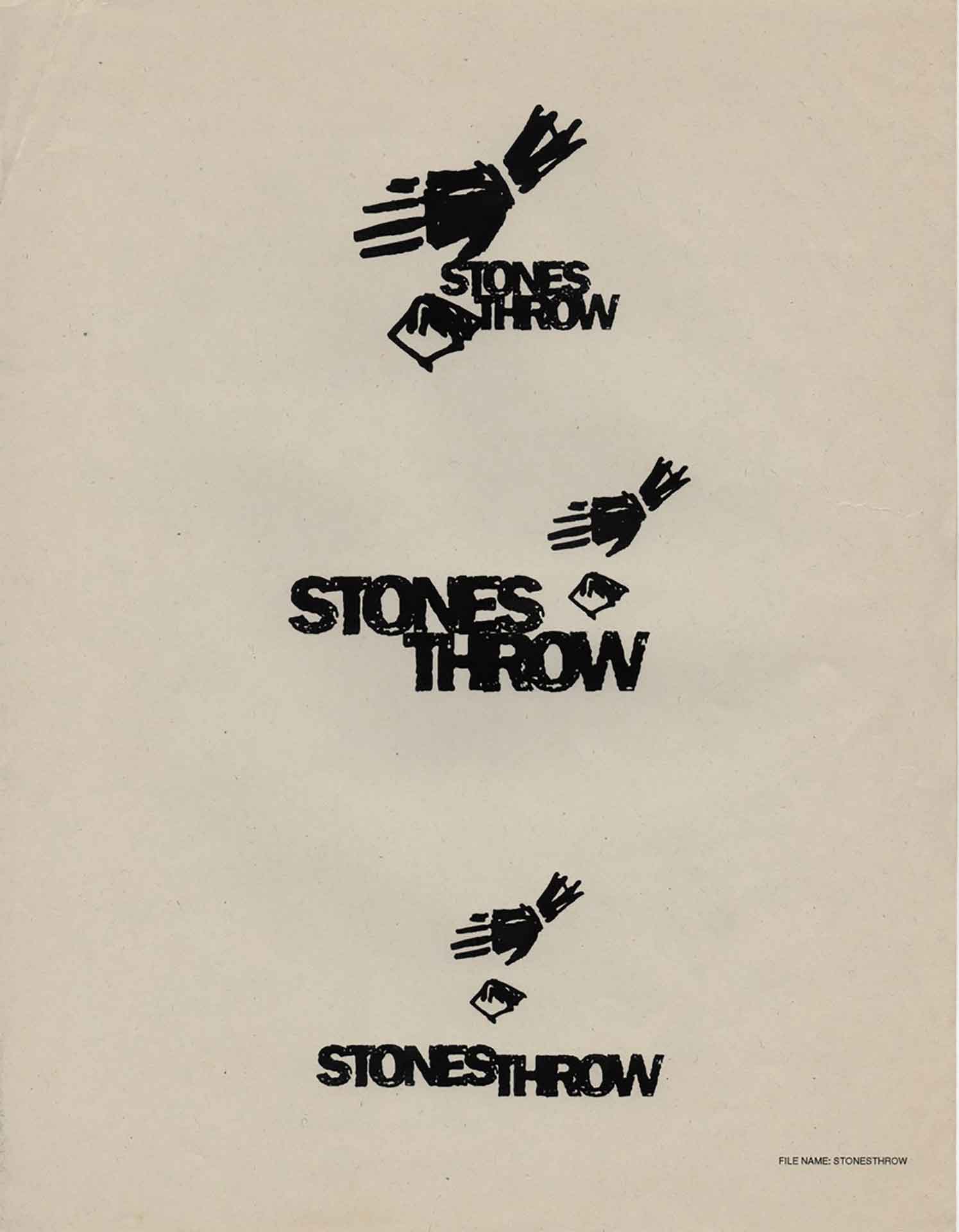
Can you touch on Dave Dub? He’s a San Jose stalwart and you put some of his early stuff on Stones Throw.
I love Dave Dub. He was in a crew called The Underbombers with Persevere. I put out his stuff on my EP Step On Our Egos, then later on My Vinyl Weighs A Ton along with Zest The Smoker and others from San Jose. I think I originally met him through this kid Sid, who hung around my younger brother (8 years younger than me). Sid lived with his mom in the same condo complex where I lived with my mom, and Sid used to come over my house and sometimes hang with Charizma and I. He later changed his name to Tape Master Steph and he got the same sampler that I had, the Ensoniq EPS, and started making beats for Dave Dub, Zest, and others. But Dave was and is very talented. I just did a remix for Dave Dub and Myka 9, and we’ve been talking about possibly doing an album together.
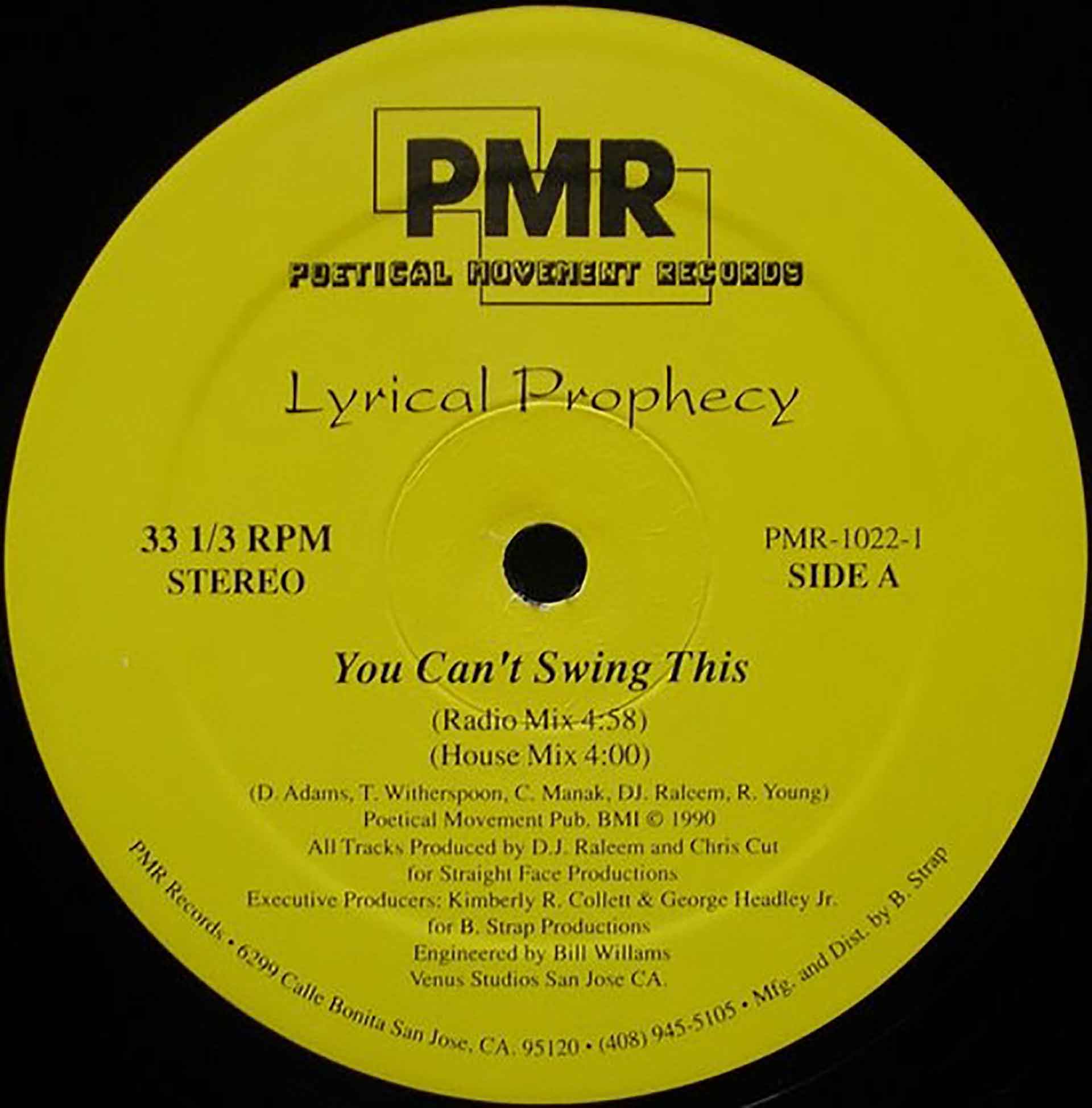
We need to talk about Lyrical Prophecy. Tell us about your experience with them. It was your first credit, right? As Chris Cut?
I was DJing on KSJS on their late night hip-hop show called Project Sound, and the program director Kim Collett and the assistant director George Headly were working on this record with a San Jose hip-hop group that sounded like they were from New York. One MC in Lyrical Prophecy was named Quiz One; he was an intimidating 6’5” and 300 pounds. The other MC was named Double Duce. Twenty years later, his son actually did the beats for an album with Phife right before Phife passed away. And Raleem was the producer. I loved what I heard from them and somehow got to go to the studio with them. Raleem was open minded enough to let me add my own ideas over the songs ± some samples and scratches — and even eventually gave me co-producing credit on them. Before we pressed the record, something happened where Double Duce’s raps were recorded over by another MC named Deshee. Deshee was very abstract and lyrical and people compared him to Rakim because of his voice. Even his speaking voice was similar, so none of us ever felt like he was biting.
So me and Kim and George each pitched in $500, and for $1,500, we were able to press 500 units. My dad loaned me the money so I could be part of this business venture, even though he always told me, “You’ll never make it doing music. There’s only one Michael Jackson. There’s only one MC Hammer.” I told him “I don’t wanna be either of those guys. I wanna do underground music.” Ironically, the record we made was called “You Can’t Swing This,” and later, Hammer came out with “U Can’t Touch This.” We were sure that he got the idea from us, but looking back now… highly doubtful. It was just a popular Bay Area hip hop saying.

Some of the timeless hip-hop from this area and era is the stuff you did with Charizma. Can you please tell us your origin story as a duo?
We had just put out the Lyrical Prophecy record and we didn’t know how to distribute it or promote it. I made up a promotional “goals” one-sheet, and it was stuff like “Get on In Living Color, Rap City, Yo! MTV Raps and The Arsenio Hall Show, get written up in The Source,” all stuff that was only possible if we were on a big indie label or major label. We got one write-up in a magazine called Dance Music Report, but coming from the Bay and making New York sounding hip-hop wasn’t the move. We didn’t even master the vinyl — we didn’t know what that was — so it sounded really lo-fi and muddy. But what I did notice was once we had a record out, every rapper in San Jose who was into the same stuff we were into (YZ, Poor Righteous Teachers, Ed O.G., Gang Starr, Public Enemy, De La Soul) found a way to get in touch with me because we actually had a record out. I was meeting so many rappers in 1990 that I wanted to do a West Coast version of Marley Marl’s In Control by doing songs with all the rappers I knew. And Charizma was one of those rappers. It was hard. I was living at home with my mom and brother and sister, and I worked and went to school, so it made scheduling having rappers come over the house challenging.
There were no cell phones or email, so you just had to get a hold of people when you were home and they were home. One day, my friend Kermit from high school brought Charizma to my house. It got confusing because Charizma also had a friend named Kermit who became our hype man and dancer for our live shows. Charizma had way more drive and focus and excitement than all the other rappers I was working with, but I wanted to at least get a few songs from each rapper, pick the best one from each of them and put out the compilation. When Charizma asked to come over, a lot of times I’d be like “I can’t do today. So-and-so is coming over.” And Charizma said, “I hear ya, but I’m the best of everyone so eventually you’re gonna drop everyone else and focus on me.” And it worked. He planted that seed.
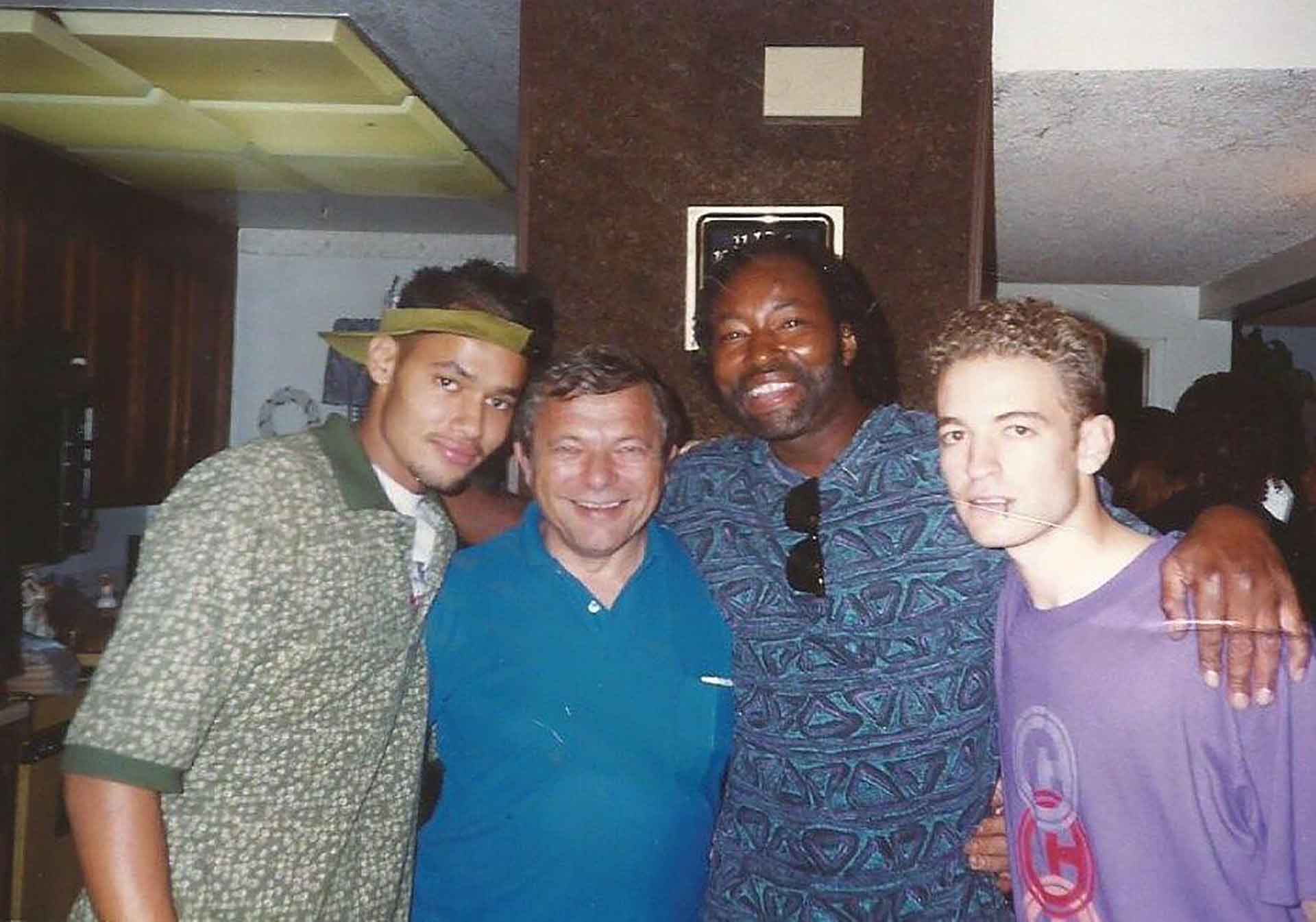
What do you know about Charizma’s group, II Def II Touch, before you guys linked?
I didn’t know about II Def II Touch before I met Charizma. They lived in Milpitas and I lived in Northeast San Jose on the border of Milpitas. So we were really close, but they were in high school and I was in college, so kind of a different scene. But when I first met him, his name was Charlie C and my name was Chris Cut. I eventually met the other MC in the group with Charizma and he was cool too. I think his name was Ty or Tyadi. His dad or his uncle was in The Natural Four, who were an R&B group that worked under Curtis Mayfield. The original business card Charizma gave me was for II Def II Touch, I think.
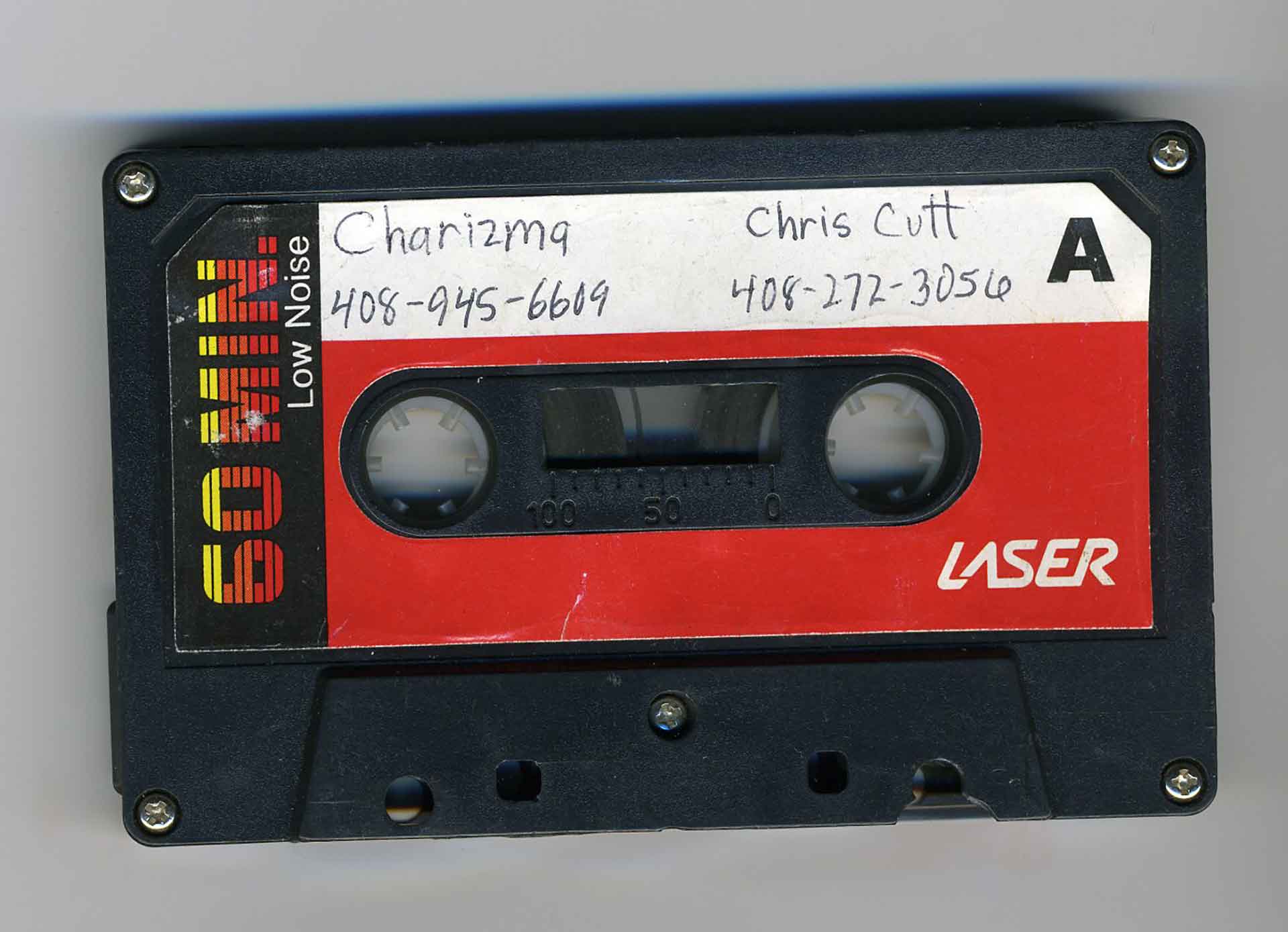
What was the recording process like? Did you guys have similar taste in other artists?
Some of our mutual rappers we loved besides the ones I mentioned above were Lord Finesse, Brand Nubian, The Juice Crew like Masta Ace and Craig G, so on and so on. Charizma loved Special Ed. That was his favorite. The recording process was that I’d work on beats on my own in my Ensoniq EPS sampler and then show them all to him and he’d pick his favorites. Charizma knew how to make beats too, but he never pushed his beats on the project. He gave me full creative control. He would pick vocal snippets and sound effects and stuff like that, but the tracks were all me and the lyrics and vocals were all him. We were a group for four years before he passed away.

I know you’ve spoken about this before, but for this piece I think we should include it. Please tell us what occurred with Charizma, and take us back to the day or moment you found out.
In December 1993, we were supposed to go to a recording studio and lay down a song. He left a voice message on my pager that he wasn’t gonna be able to do it because he had something to take care of. He was killed shortly afterward that day, in broad daylight. He was in East Palo Alto and someone tried to rob him, and he resisted and he was killed. I believe a reverend witnessed it and called 911.
This post was originally published on this site be sure to check out more of their content.



